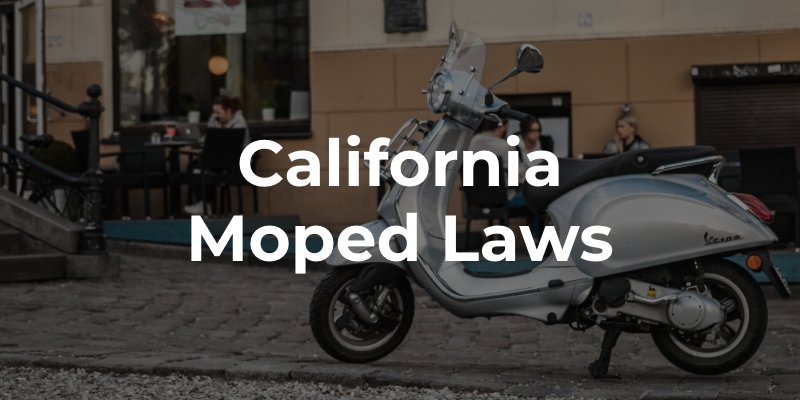Our attorneys have been assisting the Orange County and Southern California communities for over 40 years.
California is ideal for vehicles such as mopeds, with blue skies and warm weather year-round in some parts of the state. If a moped is your vehicle of choice, however, you must obey specific traffic laws to avoid a ticket or other legal troubles.
Causing a traffic accident while breaking one of California’s moped laws could lead to financial responsibility for victim damages. You could also receive a criminal conviction for misconduct such as riding a moped while intoxicated. Protect yourself from liability, prevent accidents, and avoid tickets by obeying all California moped regulations.

A moped is not a motorcycle, motor scooter, or electric bicycle. It is a distinct vehicle class under California legislation. California classifies a moped as a vehicle that is fully electric or uses a motor with two to three wheels. A moped may have pedals and cannot exceed 30 miles per hour.
The state has two types of mopeds, each with separate rules and regulations. The first type of moped can exceed 20 miles per hour, but not 30. If the moped cannot drive faster than 20 miles per hour, it is the second type.
Riders need a driver’s license to operate any type of moped in California. To obtain an operator’s license, a moped rider must pass a written and performance test. If the rider wishes to operate the first class of moped, which can exceed 20 miles per hour, he or she must obtain a special type of license. It is the same license as a motorcyclist: an M1 or M2 operator’s license.
This rule changed from a requirement to have a Class C license to operate a moped or motorized scooter that applied to riders in 2005 and earlier. Obtaining an M1 or M2 license is similar to a standard driver’s license. It requires a written and driving test. Riders can skip the driving test, however, if they pass a motorcycle basic rider course instead.
Mopeds in California require registrations. You will need to register your moped as you would a standard passenger vehicle. Mopeds differ from scooters and bicycles in this way. You can register your moped at your local California Department of Motor Vehicles (DMV). You can complete your moped registration at the same time you receive your license.
The DMV will give you a license plate to display on your moped. You will also receive a moped registration or identification card as proof of vehicle ownership. Keep your registration card on you or your vehicle when you ride.
When operating a moped on public roads, California’s universal helmet law applies. You must wear a safety-approved helmet on a moped, motorcycle, or motorized bicycle. An approved helmet will have a seal from the American Society for Testing and Materials or the Consumer Product Safety Commission.
The helmet must fit correctly and snugly on your head. If you carry any passengers on your moped, they must wear helmets as well. Helmets are extremely important in preventing head and brain injuries in moped accidents. The Centers for Disease Control and Prevention states that wearing a helmet reduces the risk of a head injury by almost 70%.
As long as you have registered your moped and carry adequate vehicle insurance, you can ride it on roads in California. You cannot take a moped on sidewalks. This could lead to a traffic infraction.
You also cannot drive a moped on a highway. You may only operate a moped on public and private roads. A vehicle must have a motor and at least five braking horsepower to take it on the highway. Obeying all of California’s moped rules could help you stay on the right side of the law. If you or a loved one was injured due to another’s negligence while riding a moped, contact us.
Our motor vehicle accident lawyers in Orange County can help you explore your legal options during a free consultation.